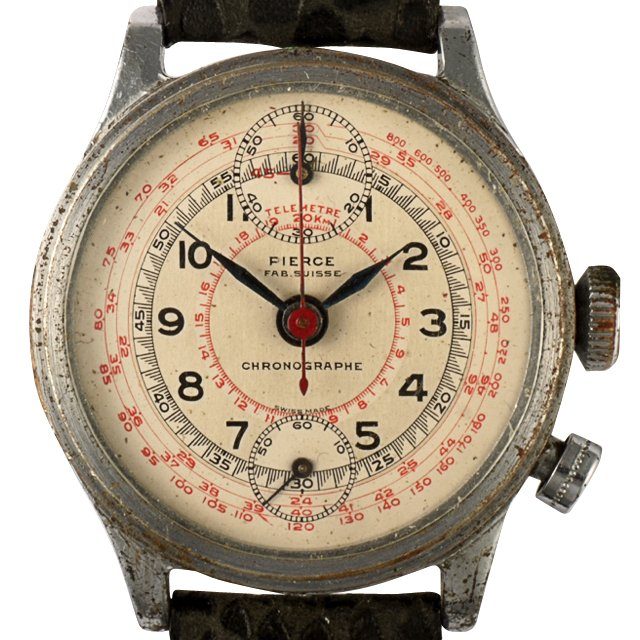
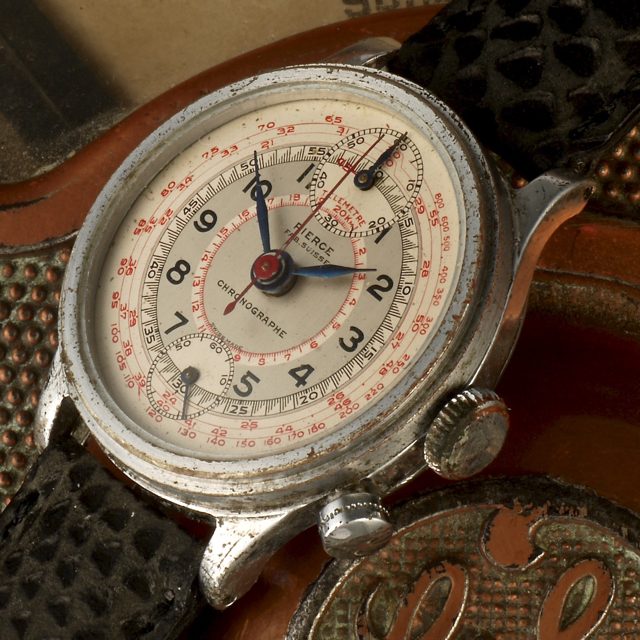
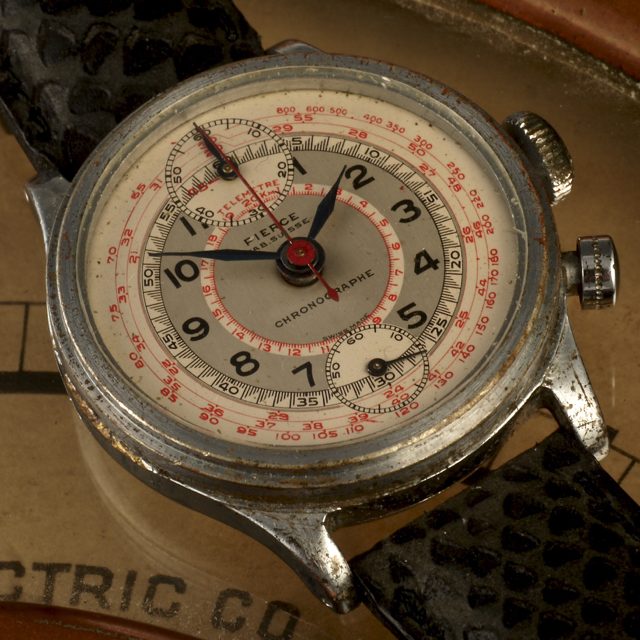
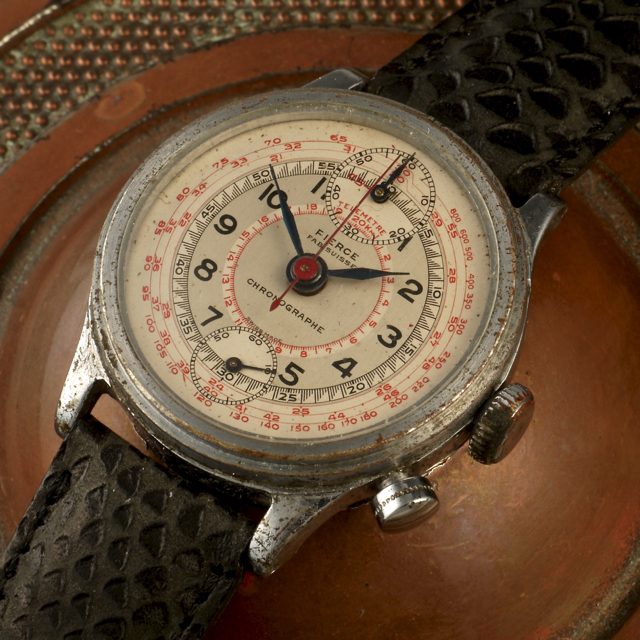
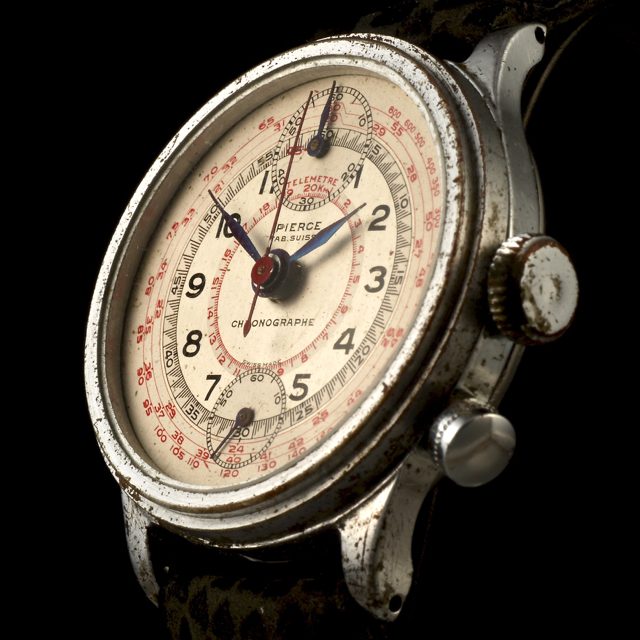
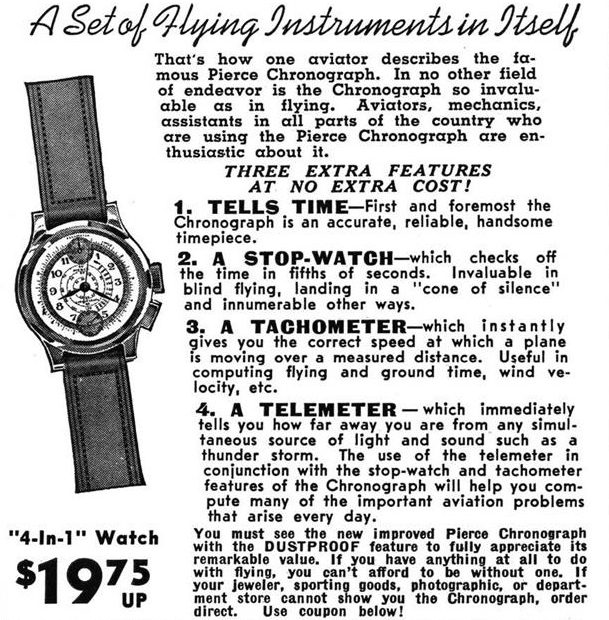
Pierce Chronographe
Hitler invades Poland; World War II begins1939 Military Pierce Chronographe Monopulsante.
The British government was the largest contractor of the Pierce Chrono until the end of the second World War. The Pierce Chronographs were used extensively by the British Army’s medical division.
In-house movement Caliber 130 which is extremely rare today. Pierce was marketed as a 4 in 1 watch in that it contained a timekeeper, a stopwatch, a telemeter scale to measure sound distance as well as a tachometer scale to measure speed.
Only a few watch brands produced their own chronograph movements in the 1930s/40s, producing a watch movement is very costly. Everything was done by hand back then, and it took years to perfect a mechanism.
While dedicated chronograph movement manufacturers such as Hahn (later Landeron), Venus, Valjoux, and Lemania produced chronographs for the general market, Pierce decides to produce their own parts and movements and keep maintenance in your own control. The 1930s/40s were hard times for small companies.
A telemeter scale found in this Pierce Chronographe measures the distance between the user of the watch and the event seen and heard. It was used extensively to calculate when artillery fired. When you saw the light of the shot of the artillery, you would push the start button and push the stop button when the thunder was heard. The number shown in the scale refers to the distance.
A tachymeter scale measures how fast an object is moving. The scale can be found either on the dial or in the bezel. In the Pierce Chronographe is the red scale inside the dial. Most tachymeters start at 400 and end at 60, but some models can show different numbers. Its very simple to calculate the speed: just mark a point and push the start button. After the object has moved for one kilometer (or mile), push the stop button. The number indicated by the hand shows the speed of the object.
